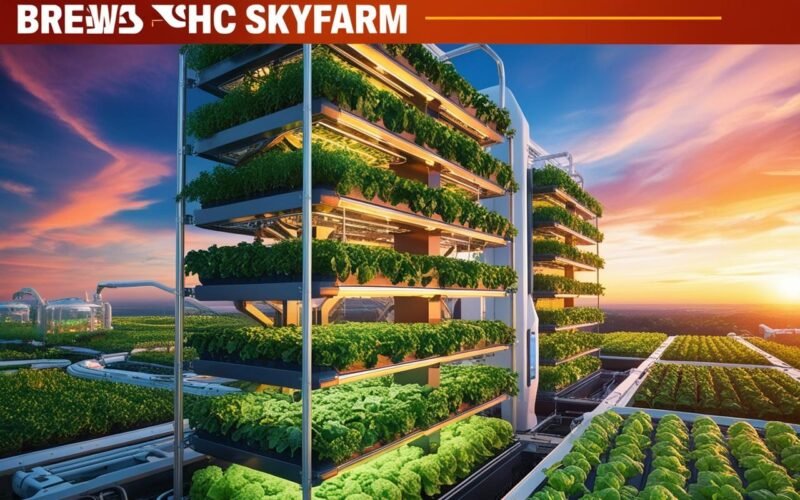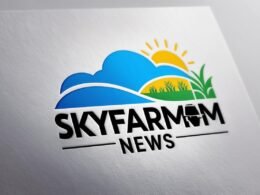INTRODUCTION
The Ministry of Food and Agriculture (MOFA), with the support of Global Affairs, Canada has produced a document titled: “Agricultural Extension Services in Ghana: Strategy and Plan 2022 – 2030”.
A strategy and plan are expected to mirror the country’s national policies and extension requirements. The document cited a few prevailing policies of the Government of Ghana, the latest being the Coordinated Program of Economic and Social Development Policies (CPESDP)– named Agenda for Jobs: Creating Prosperity and Equal Opportunity for All (2018-2024). It appears the authorities chose the target year 2030 to coincide with that of Social Development Goals (SDGs) under the guide of the timeless Guiding Principles of the draft Extension Policy (2019).
Application of Information communication technologies (ICTs) in Extension Services should impact Ghana’s agricultural development and poverty reduction goals by 2030.
For ease of reference, the link to the 40-page document is provided here:
www.farmradio.org/wp-content/upload/2022/05/Agriculture-e-extension-strategy- digital.pdf
One important activity that leads to the successful development and implementation of a strategy and plan is identifying key stakeholders and continuously engaging with them.
STAKEHOLDER ENGAGEMENT
This is a process leading to a product. Important though it is, the process rarely finds a place in a document such as this e-Extension Strategy. The Acknowledgement section (p. 4) gives an idea about stakeholders engaged.
Accordingly, the strategy and plan were produced under the guidance of a 16-member steering committee and one coordinator. Two personalities did the research. One of the researchers, one steering committee member, and two others performed the write-up. Farm Radio International (FRI) provided enormous support and coordination. There is no indication of where the other steering committee members came from. Their places of work, if known, will show how diverse the initial stakeholders were.
Gleaning from the list of acronyms and the text, perhaps stakeholder consultation had gone on with the Alliance for a Green Revolution in Africa (AGRA), Catholic Relief Service (CRS), The Hunger Project (THP), Non-Governmental Organizations (NGOs), Civil Society Organizations (CSOs), Farmerline, Esoko, Blue Town and Viamo. These organizations have potential stakeholders, not forgetting ministries of Communication and Digitalization, Gender and Social Inclusion, and other essential agriculture and non-agriculture agencies.
Why there is a renewed approach to e-extension should be put into proper perspective.
NATIONAL CONTEXT FOR E-EXTENSION SERVICES
The sections on History of Agricultural Extension Services in Ghana and E-Extension in Ghana: The Rationale (p. 11) provide the strategic context of e-Extension Services covering the past and present Extension Services and justification for the digitalization of Agricultural Advisory Services.
That portion traced Extension from pre- and post-independence to 1987 when the Department of Agricultural Extension Services in MOFA was established. The history was truncated as it did not capture what happened when extension staff in the regions and districts became part of the Local Government Service. Nonetheless, glimpses of the story resurfaced addressing decentralization of governance as part of its rationale for e-Extension in Ghana.
Perhaps the most compelling background for e-Extension is the draft Agricultural Extension Policy for Ghana (2019) which gave a vision and nine Key Guiding Principles in Extension (p.). If it is still a draft, one could suggest a tenth principle covering cross-cutting issues of Environmental Sustainability, Climate Change, Child Labor, and preventable diseases.
Furthermore, the exigencies of the times, such as rapidly evolving Information Technologies (ITs), COVID-19, and dwindling extension agent population call for additional tools for service delivery. Meanwhile, the renewal would not be effective until we learn lessons from the digital extension ecosystem.
E-EXTENSION TRENDS AND PRACTICES
Studies of e-extension practices in Uganda, Ethiopia, Malawi, and Zambia showed the countries’ responses to calls for innovative ways to use ICTs to reach more farmers with improved technologies. The main considerations are radio, telephony, internet, and audio-visual gadgets (p. 15).
In the case of Ghana, the document referred to programs in URA radio, Ghana Broadcasting Corporation’s (GBC) Agrolink, and Agrimag on television. Also prevailing were the Social Purpose Business Models of Blue Town, Esoko, Farmerline, and Viamo. The Ghana Extension Systems Strengthening Project (GESSiP) in the northern section of the country combines traditional extension with the application of ICTs (p. 17).
The main concerns for Ghana are sustainability and mainstreaming. As in other African countries, the key bottleneck is the ability and willingness of customers to pay for services rendered by social purpose businesses in the private sector. E-Extension in Africa should consider the emerging use of Facebook and YouTube in combination with radio and the microblogging tool, WhatsApp.
Having understood the trends and practices, planners of the strategy for Ghana, developed a framework for e-Extension vision.
FRAMEWORK FOR A NATIONAL E-EXTENSION VISION
The Directorate of Agricultural Extension Services (DAES) has the mandate to develop policies for agricultural extension. Consistent with the draft Agricultural Extension Policy for Ghana, the directorate was set to adopt transformational e-Extension Services. To repeat for emphasis: E-Extension Services are remote-led, technology-enabled services for agricultural producers and value chain actors. They use a range of ICT and digital tools and devices including radio, telephony, video, television, mobile apps and devices, social media, and emerging technologies.
The section on Purpose of Strategy and Plan (p. 9) explains in principle why e-Extension Services is transformational. The next question is what the e-Extension Strategy and Plan will achieve.
THE MOFA STRATEGY FOR AGRICULTURE E-EXTENSION SERVICES IN GHANA
On page 20, the vision is clear and is termed Vision of Success: “Ghana’s e-Extension strategy and plan is inspired by the vision of all Ghanaian agricultural producers and value chain actors being reliably and sustainably served by transformational, remote-led, technology-enabled extension services by 2030.”
Measurable Key Performance Indicators provided were farm profitability, growth in farm productivity, increase in household incomes, and increase in the use of e-extension by marginal groups. One would suggest that an increase in the use of e-extension by other value chain actors is also measured.
It is envisaged that the services will strengthen market linkages, provide the enabling environment for private sector and CSO participation, and offer the opportunity for value chain actors to be heard.
The theoretical basis of the vision – the Theory of Change is nicely put in diagrammatic form. However, the text preceding the diagram appears to be the structure or building blocks and expected outputs – the platform (p.24).
COMPONENTS AND GOVERNANCE MECHANISM
Strategy for Ghana’s Agricultural E-Extension System (p. 24) provides the components and governance mechanism. Elements of the system attest to that. In the diagram, pillars should be seen supporting the platform, with arrows. Also, the “Facilitate Agenda Setting Process” should be painted green like the others in the pillars.
With a solid foundation in the DAES e-Extension Desk and a nine-member Advisory Board, regional hubs, and satellite hubs, the Digital Advisory System is poised to achieve good results.
IMPLEMENTATION AND SUSTAINABILITY PLAN
The real plan is the nine lines of action on page 29. Monitoring and Evaluation (M&E) being No. 10 should not confuse anyone. M&E is a chapter on its own, as each line of action, it is stated, will include:
- Goals and targets by 2030
- Institutional requirements
- Policy requirements
- Time frame
- Resources, and
- Estimated budgetary requirements
Resources become inputs, which are costed for budgeting. Estimates will be in three-year rolling budgets in the Medium-Term Expenditure Framework.
Mobilizing resources for sustainability is, to a large extent, embedded in the strategy and plan. The human resources manning the desk, hubs, and satellite hubs are permanent staff. Then, the business models of participating agencies like GBC, telecommunication companies, and social purpose entities, can generate revenue to sustain the program. Of course, government and donor funding are of utmost importance.
THE UNSEEN PART AND TRIGGERS
E-extension in Ghana is implementable and, indeed, being implemented. An absence of an Action Plan, M&E, and Budget online in a typical format does not take anything away from the comprehensiveness of the document. All the ingredients are there.
However, the reader would have wished to see the activities structured over the medium term as a foundation for the long term and triggers thereof. Stakeholders and assessors alike would then be able to see progress and implementation results in the Annex to this 40-page document.
CONCLUSION
This analysis addressed all the sections, including the unseen Annex, under different headings. Comments and recommendations are interspersed in the appropriate sections and there is no need to repeat them.
Digital Agricultural Advisory Services has been in Ghana for a long time. FRI is in to accelerate the tempo. The Canada-based non-profit organization uses radio and telephony to reach agricultural producers and other value chain actors. Accordingly, the Agriculture e-Extension Strategy and Plan for Ghana, which FRI coordinated and developed in conjunction with MOFA, recognizes other existing ICT tools to be adapted in combination and partnership. If you want to go fast, go alone. If you want to go far, go together.
The photograph on the last page summed it up. Two of the women look ahead with optimism.









